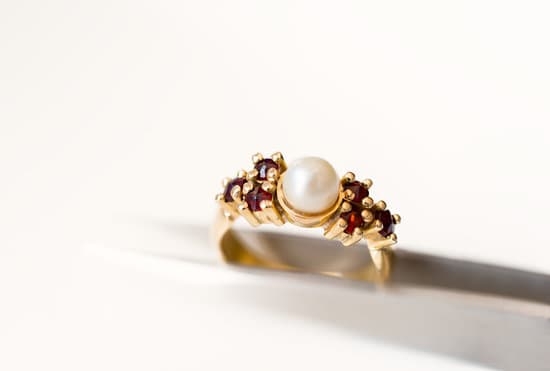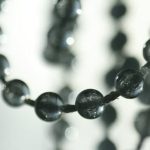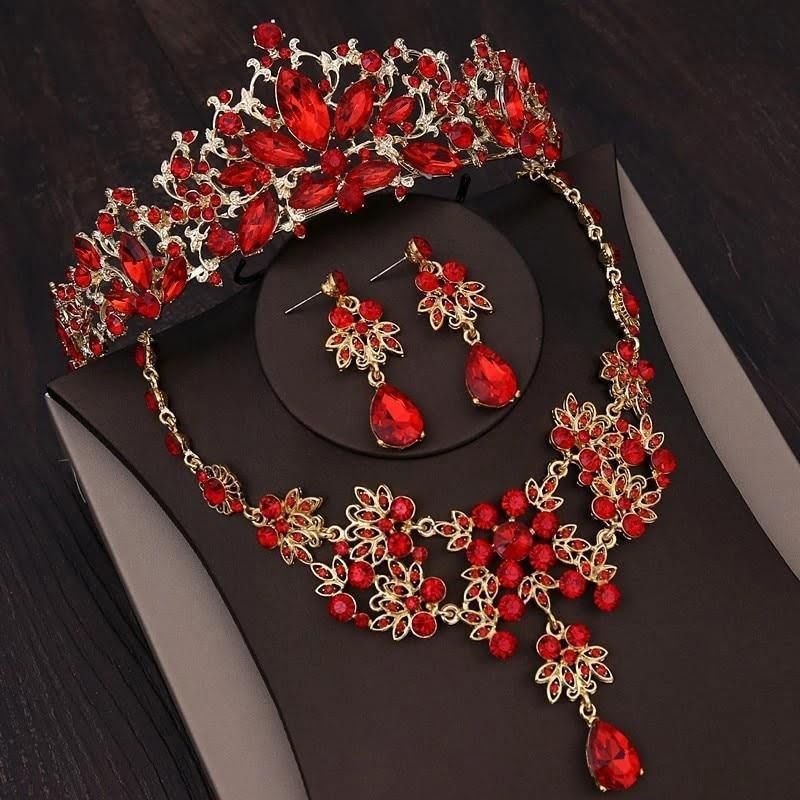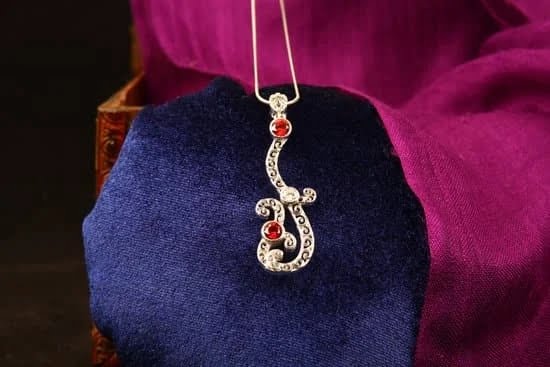What cord should I use for jewelry beading? Choosing the right cord is crucial for creating successful and durable jewelry pieces. The type of cord used can affect the strength, flexibility, and overall aesthetic appeal of the finished product. In this article, we will explore the importance of selecting the appropriate cord for your jewelry beading projects.
When it comes to jewelry beading, there are various types of cords to consider such as silk, nylon, hemp, and leather. Each type offers different strengths and levels of durability which can impact the longevity of your jewelry pieces. Understanding the differences in these cords is essential in ensuring that your creations stand the test of time.
Additionally, factors such as flexibility, ease of use, and compatibility with different types of beads play a significant role in determining the best cord for your project. Considering these aspects alongside color choices and aesthetic appeal will help you craft unique and visually stunning jewelry pieces. Stay tuned as we delve deeper into each consideration to guide you in selecting the perfect cord for your next beading endeavor.
Types of Cords Commonly Used in Jewelry Beading
Silk, nylon, hemp, and leather are some of the most commonly used cords in jewelry beading. Each type of cord offers unique characteristics that can greatly impact the overall look and feel of the finished piece. When deciding what cord to use for jewelry beading, it is essential to consider your project’s specific needs and requirements.
Silk cords are a classic choice for jewelry making due to their smooth texture and elegant appearance. They come in various sizes and colors, making them versatile for different designs. Silk cords are often used with delicate beads like pearls or glass beads to create a sophisticated look.
Nylon cords, on the other hand, are known for their strength and durability. They are an excellent choice for heavier beads or projects that require extra support. Nylon cords also come in a wide range of colors and thicknesses, allowing for flexibility in design choices. When using nylon cords for jewelry beading, you can rest assured that your creation will withstand daily wear and tear.
Leather cords add a rustic and natural touch to jewelry pieces, perfect for creating bohemian or casual styles. They offer a more organic look compared to silk or nylon cords and are ideal for creating statement necklaces or bracelets. Leather cords come in different sizes and finishes, such as round or flat, giving you plenty of options to explore in your designs.
| Cord Type | Characteristics |
|---|---|
| Silk | Smooth texture, elegant appearance, versatile for delicate beads |
| Nylon | Strength, durability, wide range of colors/thicknesses |
| Leather | Rustic/natural touch, organic look perfect for bohemian styles |
Strength and Durability
When it comes to jewelry beading, selecting the right cord is crucial not only for achieving the desired aesthetic but also for ensuring the longevity of your creation. The strength and durability of the cord you choose can greatly impact the overall quality and lifespan of your jewelry piece. Understanding how different cords vary in terms of strength and longevity can help you make an informed decision when it comes to selecting the appropriate material for your project.
Here are some common types of cords used in jewelry beading along with their respective strengths and durability:
- Silk: Silk cords are known for their strength and smooth texture, making them ideal for delicate projects with lightweight beads. However, silk may not be as durable as other materials like nylon or leather.
- Nylon: Nylon cords are widely used in jewelry making due to their durability and flexibility. They come in various thicknesses, providing options for different bead sizes and project types.
- Hemp: Hemp cords offer a natural, rustic look to jewelry pieces while also providing decent strength. They are great for casual or bohemian-style designs but may not be suitable for more intricate projects.
Considering the type of beads you intend to use is essential when choosing a cord for your jewelry beading project. Heavier beads or those with sharp edges may require a stronger, more durable cord to prevent breakage or wear over time. Likewise, lighter beads may work well with a softer, more flexible cord that allows for easy manipulation during the beading process.
In addition to strength and durability, it is important to consider factors such as knotability, abrasion resistance, and water resistance when selecting a cord for jewelry beading. By taking these aspects into account along with personal preferences and budget constraints, you can ensure that your finished piece not only looks beautiful but also stands the test of time.
Flexibility and Ease of Use
When it comes to jewelry beading, one of the key factors to consider in selecting the right cord is its flexibility. The flexibility of the cord can greatly impact the ease of the beading process and the overall outcome of your jewelry piece. Different types of cords offer varying levels of flexibility, so it’s important to choose one that suits your project needs.
To help you understand how the flexibility of cords can affect the beading process, here are some common options along with their characteristics:
- Silk: Silk cords are known for their softness and pliability, making them ideal for delicate beadwork and intricate designs. They offer great flexibility, allowing you to easily manipulate them through small beads.
- Nylon: Nylon cords are durable and have a slight stretch to them, providing some flexibility while maintaining strength. They are easy to knot and work with, making them suitable for a variety of bead sizes.
- Hemp: Hemp cords are natural fibers that offer moderate flexibility. They provide a rustic look and feel to your jewelry pieces, but may require additional care when working with smaller beads due to their texture.
Consider the level of intricacy in your design and the size of beads you’re using when choosing a cord based on its flexibility. A more flexible cord may be preferred for intricate designs with smaller beads, while a sturdier cord might be better suited for larger or heavier beads. Experimenting with different cords will help you determine what works best for your specific jewelry beading project.
Remember that finding the right balance between flexibility and ease of use is essential in ensuring a successful beading experience. By understanding how different cords vary in terms of flexibility and taking into account your design preferences, you’ll be able to choose the perfect cord for your next jewelry creation.
Considerations for Different Types of Beads
When it comes to jewelry beading, choosing the right cord is crucial, especially when considering the type and size of beads being used. Different types of beads require different types of cords to ensure the durability and longevity of the final product. Beads come in various materials such as glass, metal, gemstones, and wood, each with its unique characteristics that can affect the choice of cord.
For smaller, delicate beads like seed beads or pearls, a finer and more flexible cord like silk thread may be preferred to avoid overpowering the delicate nature of these beads. On the other hand, larger beads such as chunky gemstones or metal beads may require a sturdier and thicker cord like nylon or leather to provide enough support for the weight of the beads.
It’s essential to consider not only the size but also the weight and texture of the beads when selecting a cord for your jewelry project.
Moreover, certain types of beads have larger holes that may limit the choice of cords that can be used. For example, beads with small holes may require a thin needle-like cord to pass through multiple times for secure threading without damaging the bead. Understanding how different types and sizes of beads interact with various cords will help you make informed decisions when choosing the right cord for your jewelry beading project.
| Type of Beads | Recommended Cord |
|---|---|
| Seed Beads | Silk Thread |
| Gemstone Beads | Nylon or Leather Cord |
| Metal Beads | Nylon Cord |
Color and Aesthetic Appeal
When it comes to jewelry beading, the choice of cord plays a crucial role in not only the structural integrity of the piece but also its overall aesthetic appeal. The color and texture of the cord can significantly impact the final look of your jewelry creation. Whether you are aiming for a sleek and polished finish or a more natural and rustic vibe, selecting the right cord is essential in achieving your desired outcome.
The color of the cord you choose can complement or contrast with the beads you are using, ultimately influencing the visual impact of the jewelry piece. A monochromatic look with matching cord and beads can create a sophisticated and cohesive design, while contrasting colors can add an element of interest and make certain details stand out.
Additionally, consider how different textures of cords can enhance the overall look – from smooth and shiny silk to rugged and earthy hemp, each type of cord brings its own unique character to the jewelry piece.
Experimenting with different combinations of colors and textures can help you discover creative ways to elevate your jewelry designs. Keep in mind that personal preference also plays a significant role in choosing the right cord for your project. Whether you prefer bold statement pieces or delicate and subtle creations, selecting a cord that resonates with your style will ultimately result in a finished product that truly reflects your vision.
So next time you ask yourself “what cord should I use for jewelry beading? “, consider not only practical factors like strength and durability but also how color and texture can enhance the overall aesthetic appeal of your creations.
Additional Factors to Consider
When deciding what cord should I use for jewelry beading, it’s essential to consider a few additional factors beyond just strength and flexibility. One crucial factor to think about is your budget. Different types of cords come at varying price points, so it’s important to choose one that fits within your project budget. While high-quality cords may be more durable, there are also affordable options available that can still provide good results.
Personal preference also plays a significant role in selecting the right cord for your jewelry beading project. Some individuals may have a preference for natural materials like hemp or leather, while others may prefer the sleekness of nylon or the elegance of silk. Considering what you personally enjoy working with can make the beading process more enjoyable and fulfilling.
Additionally, the type of project you are working on can influence your choice of cord. For example, if you are creating a delicate bracelet with small beads, a fine silk cord may be more suitable than a thick leather cord.
On the other hand, if you are making a chunky statement necklace, a sturdier nylon or hemp cord might be a better option. Understanding how different cords interact with various bead sizes and styles can help you achieve the desired look for your jewelry piece.
Tips for Choosing the Right Cord
Consider the Bead Size and Weight
When choosing the right cord for your jewelry beading project, one important factor to consider is the size and weight of the beads you will be using. For heavier beads, such as gemstones or metal beads, you will need a stronger and more durable cord that can withstand the weight without stretching or breaking.
Thicker cords like leather or nylon are ideal for larger and heavier beads, providing the necessary support for your jewelry piece. On the other hand, if you are working with smaller, lighter beads like seed beads or glass beads, a finer and more flexible cord like silk may be more suitable to allow for intricate detailing in your design.
Match Cord Thickness to Bead Hole Size
Another essential tip for choosing the right cord for jewelry beading is to match the thickness of the cord to the size of the bead hole. If your cord is too thick for the bead hole, it will be challenging to string the beads onto the cord smoothly, resulting in frustration and potential damage to both the cord and beads.
Conversely, if your cord is too thin for the bead hole, it may not provide enough support for the beads, increasing the risk of breakage. It is crucial to find a balance between bead hole size and cord thickness to ensure smooth stringing and secure beading.
Experiment With Different Cords
One effective way to determine which cord works best for your jewelry beading project is to experiment with different types of cords on small samples before committing to a final design. By testing out various cords like silk, nylon, hemp, and leather with different beads and techniques, you can assess how each cord performs in terms of strength, flexibility, ease of use, and aesthetic appeal.
This hands-on approach allows you to make an informed decision based on practical experience rather than just theoretical knowledge. Remember that what works best for one project may not necessarily work well for another due to varying factors like bead type, project complexity, and personal preference.
Conclusion
In conclusion, selecting the right cord for jewelry beading is crucial in ensuring the overall success and longevity of your jewelry pieces. The type of cord you choose can impact the strength, flexibility, ease of use, and aesthetic appeal of your creations. Whether you opt for silk, nylon, hemp, leather, or any other material, it’s essential to consider factors such as the type and size of beads being used, personal preferences, budget constraints, and the specific project at hand.
Different cords offer varying levels of strength and durability, so it’s important to match the cord’s properties with the demands of your design. For delicate projects with smaller beads, a more flexible and thinner cord like silk may be suitable.
On the other hand, if you’re working with heavier beads or want a more rugged look, a sturdy and thick leather cord might be the better choice. By considering these factors thoughtfully and taking into account the specific needs of your project, you can make an informed decision on what cord should be used for jewelry beading.
Ultimately, choosing the right cord for jewelry beading is not just about functionality but also about enhancing the beauty and craftsmanship of your creations. The color and texture of the cord can complement or contrast with your beads to create a visually appealing piece that reflects your unique style.
By paying attention to all these details and following some practical tips for selecting cords effectively, you can elevate your jewelry making skills and create stunning pieces that stand out in terms of both design and quality.
Frequently Asked Questions
What Kind of Cord Do You Use for Beading?
When it comes to beading, the type of cord you use can depend on the specific project you are working on. Some commonly used cords for beading include nylon thread, silk thread, waxed linen cord, and clear elastic cord. Each type of cord offers different benefits in terms of strength, flexibility, and ease of use.
What Is the Best String for Beaded Jewelry?
The best string for beaded jewelry largely depends on the type of beads you are using and the overall design of your piece. Beading wire is often a popular choice for jewelry making as it provides strength and flexibility, especially for heavier beads.
Another commonly used string for beaded jewelry is nylon thread, which offers durability and a range of colors to match different bead types.
What Is the Best Thread for Beading Jewelry?
Selecting the best thread for beading jewelry is crucial to ensuring the longevity and quality of your crafted pieces. One popular choice among beaders is Nymo thread due to its strength, flexibility, and ability to withstand friction from sharp-edged beads.
FireLine is another highly recommended thread known for its durability and resistance to fraying or stretching during the beading process. Ultimately, the best thread will depend on your personal preferences and the specific requirements of your project.

Welcome to my jewelry blog! My name is Sarah and I am the owner of this blog.
I love making jewelry and sharing my creations with others.
So whether you’re someone who loves wearing jewelry yourself or simply enjoys learning about it, be sure to check out my blog for insightful posts on everything related to this exciting topic!





